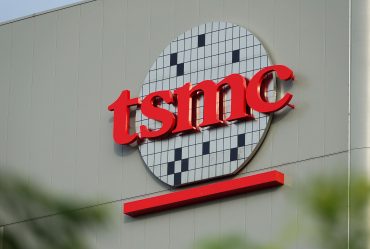
Jefferies Downgrades ASML, ASM as Semiconductor Equipment Demand Weakens
5 minute read

Semiconductor equipment stocks face downgrade pressure as DRAM spending forecasts signal broad industry slowdown into 2026
Key Takeaways
- Jefferies downgrades ASML and ASM International to Hold citing deteriorating semiconductor equipment demand in 2026, with DRAM equipment spending projected to fall 16%
- ASML revenue forecast to decline 2% in 2026 to €32.1 billion, with earnings per share falling 6% to €22.18, both significantly below market consensus
- Wafer fab equipment spending expected to drop 1% next year versus consensus projections of 10-20% growth, as semiconductor cycle peaks in first half of 2025
Introduction
Major semiconductor equipment manufacturers face a challenging 2026 outlook as analysts slash growth projections and downgrade key industry players. Jefferies has moved ASML and ASM International from Buy to Hold ratings, citing weakening demand patterns that diverge sharply from market expectations.
The downgrades reflect deteriorating fundamentals across memory chip manufacturing, particularly in DRAM equipment where spending is projected to fall 16%. This shift marks a significant departure from the bullish consensus that anticipated double-digit growth for wafer fab equipment spending next year.
Key Developments
Jefferies projects wafer fab equipment spending will decline 1% in 2025, contrasting with consensus forecasts of 10-20% growth. The brokerage expects the semiconductor cycle to peak in the first half of 2025 before plateauing through year-end.
China represents a particular concern, with WFE spending expected to drop an additional 8% following a 16% decline this year. The weakness stems from increasing inventory levels and disruptions in consumer electronics sales, particularly affecting DRAM and memory chip markets.
ASML’s recent quarterly results already signal industry-wide challenges. Net sales dropped to €7.74 billion, down 16.4% year-over-year, while lithography system sales fell to 73 units from 119 units the previous quarter. Net bookings, a key forward indicator, plummeted 44.4% year-over-year to €3.94 billion.
Market Impact
Mizuho has joined the cautious stance, downgrading ASML to Neutral from Buy and slashing its price target to 650 euros from 810 euros. The firm warns of downside risks to 2026 business outlook and projects EUV shipments will decline to 49 units in 2026 from 53 in 2025.
ASML’s memory orders declined 33% year-over-year in the six months through Q1 2025, while its memory backlog dropped an estimated 27% over the same period. The company’s revenue concentration with Taiwan Semiconductor Manufacturing adds volatility concerns.
ASM International faces similar headwinds, with Jefferies forecasting only 3% revenue growth in 2026 versus market expectations of 15%. The company’s memory revenue, after surging over 150% in 2024, is expected to decline in both 2025 and 2026 due to reduced HBM-related demand.
Strategic Insights
The downgrades highlight broader structural challenges facing semiconductor equipment manufacturers. Chipmakers are pulling back on capital expenditures amid persistent inventory corrections and weak DRAM pricing, creating a cyclical downturn that analysts say exceeds normal patterns.
Geopolitical risks compound these challenges. U.S. export restrictions, including potential bans on sales to Chinese memory maker CXMT and tighter controls on immersion systems, threaten to disrupt established revenue streams. Chinese sales represent 26% of ASML’s annual revenue in 2025.
However, advanced logic segments show resilience. ASM International’s exposure to increasing ALD and epitaxy layer counts in next-generation nodes like 2nm and A16 positions it for potential outperformance, though this cannot offset broader market softness.
Expert Opinions and Data
According to Investing.com, Jefferies analysts said this anti-consensus view reflects weakening order trends, elevated 2025 China exposure, and geopolitical risks to exports. The firm’s ASML revenue forecast of €32.1 billion for 2026 sits 9% below consensus.
Despite near-term caution, analysts note both stocks trade at reasonable valuations: ASML at 30x 2026 EPS and ASM at 31x. Jefferies raised its price target on ASML to €690 from €660 and on ASM to €530 from €490, suggesting the downgrades reflect timing rather than fundamental deterioration.
“We also expect semicap-related newsflow to deteriorate over the next 6-9 months,” Jefferies stated, as macro uncertainty, regulatory risks, and weakening memory demand weigh on sentiment. The firm prefers ASM International over ASML, citing its greater exposure to rising advanced logic spending.
Conclusion
The semiconductor equipment sector faces a period of cyclical adjustment as inventory corrections and weakening memory demand reshape growth trajectories. While companies like ASML maintain strong technological positions and substantial backlogs, near-term headwinds require recalibrated expectations for 2026 performance.
The downgrades reflect a measured response to deteriorating fundamentals rather than structural decline. Both ASML and ASM International retain competitive advantages in critical technologies, positioning them for recovery when the next industry upcycle begins.








